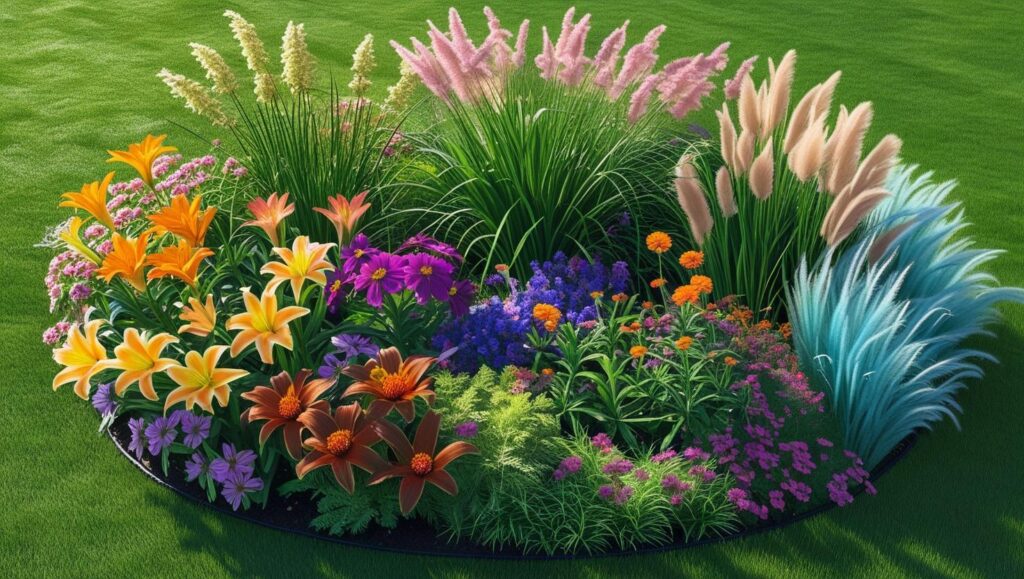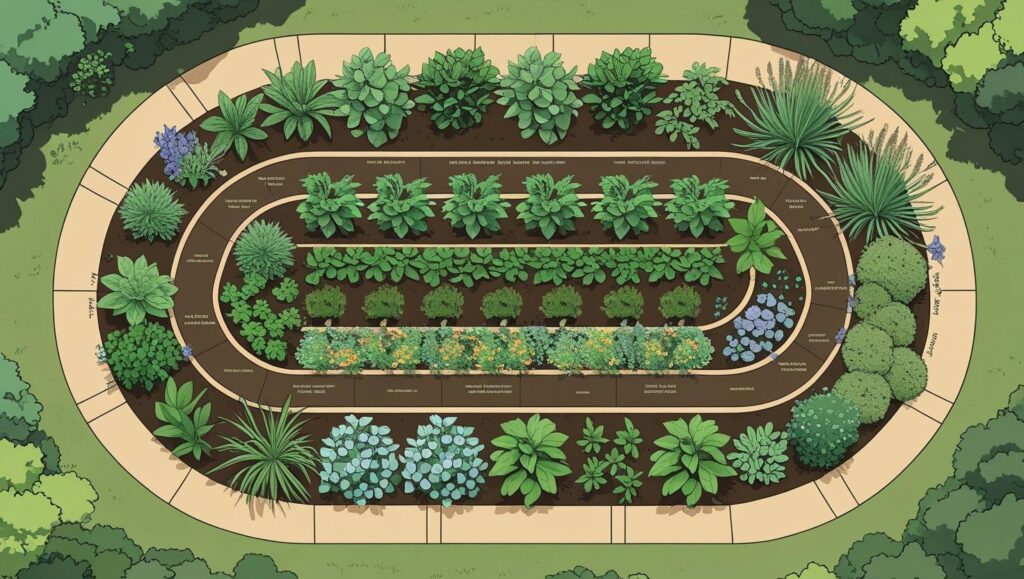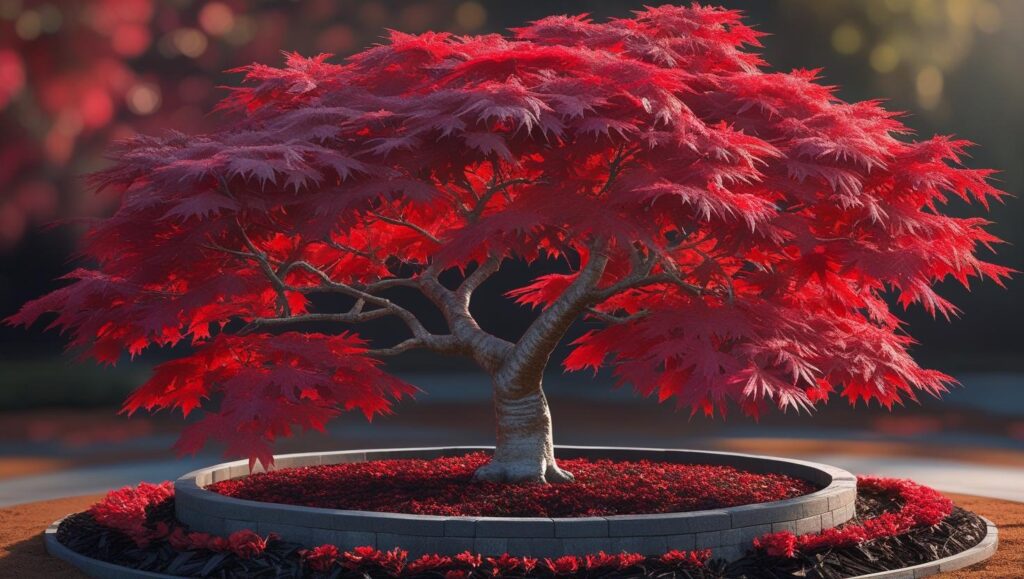Landscapers and homeowners are increasingly turning to a versatile design element to add dimension and color to outdoor spaces: the island flower bed. Unlike traditional beds that border a home or walkway, these standalone gardens serve as vibrant focal points, viewable from all angles and capable of transforming a simple lawn into a dynamic and sophisticated landscape.
An island bed’s separation from other structures provides a unique canvas for creativity. “Island beds break up the monotony of a large lawn, creating visual interest and a sense of intention in the landscape design,” says Dr. Amelia Thorne, a professor of landscape architecture at the University of California, Davis. They offer an opportunity to cultivate a specific theme, color palette, or plant collection that can define a yard’s character.

The Tiered or Raised Island Bed
For those seeking to add vertical dimension, a tiered or multi-level island flower bed offers a dramatic and practical solution. By constructing two or three levels of varying heights using materials like stacked stone, timber, or corten steel, this design creates distinct planting zones. This elevation is not just for aesthetic appeal; it can significantly improve drainage, which is crucial for plants that dislike “wet feet.”
- Top Tier: Ideal for a “thriller” plant—a tall, eye-catching specimen like an ornamental grass (e.g., Karl Foerster feather reed grass) or a sculptural shrub.
- Middle Tiers: Use “filler” plants with mounding habits, such as coneflowers, sedum, and daylilies.
- Bottom Tier: Plant “spiller” varieties like creeping phlox or sweet potato vine that cascade gracefully over the edges.
According to a guide from the University of Minnesota Extension, raised beds also warm up faster in the spring, allowing for a longer growing season in cooler climates.
The Kidney-Shaped and Curved Design
Moving away from rigid geometric shapes, the kidney-shaped or serpentine island bed introduces a soft, natural flow to the landscape. Its gentle curves are inherently pleasing to the eye and guide visitors smoothly through the space. This organic form is particularly effective in softening the hard lines of a home’s architecture or a straight driveway.
Plantings in a curved bed should follow the shape, with taller plants placed in the deepest part of the curve and shorter plants along the narrower ends. This arrangement creates a balanced look from all viewing angles.

The Pollinator Paradise Island
Design an island bed with a purpose by creating a haven for bees, butterflies, and hummingbirds. A pollinator garden focuses on nectar-rich and pollen-heavy flowers, providing a critical food source for these vital species. To maximize its effectiveness, choose plants that bloom sequentially from spring through fall, ensuring a continuous buffet.
Key plants for a pollinator island include:
- Spring: Salvia, catmint, and columbine.
- Summer: Bee balm (Monarda), milkweed (Asclepias), and black-eyed Susans (Rudbeckia).
- Fall: Asters and goldenrod (Solidago).
The National Wildlife Federation emphasizes planting in clusters rather than single specimens, as larger groupings of the same flower are more attractive to pollinators.
The Low-Maintenance Rock Garden
For a modern or drought-tolerant landscape, an island rock garden, or alpine bed, is an excellent choice. This design combines carefully placed boulders and stones with hardy, low-water plants. The rocks provide structural interest and help retain soil moisture, while the plants offer subtle color and texture.
Popular plant choices for a rock garden include succulents like sedum and hens-and-chicks (Sempervivum), as well as tough perennials like lavender, creeping thyme, and ice plant (Delosperma). A top dressing of gravel or pea stone completes the look and helps suppress weeds.
The Single-Specimen Showcase
Sometimes, less is more. This minimalist approach involves creating a smaller island bed to showcase a single, magnificent specimen tree or shrub. The focus is entirely on the form, texture, or seasonal color of one plant. A Japanese maple, a weeping cherry tree, or a standard hydrangea can serve as a living sculpture in the landscape.
The surrounding bed can be kept simple with a ring of groundcover or a clean mulch base to avoid distracting from the main feature. “This technique works exceptionally well in formal or contemporary garden designs where a strong focal point is desired,” notes a publication from the Royal Horticultural Society.

The Four-Season Interest Bed
A well-designed island flower bed should offer visual appeal throughout the year, not just in the peak of summer. Achieving four-season interest requires a strategic mix of plants with varying attributes.
- Winter: Incorporate evergreen shrubs (dwarf conifers, boxwood), plants with interesting bark (red-twig dogwood), and ornamental grasses that hold their shape through snow.
- Spring: Feature early-blooming bulbs like daffodils and tulips, followed by flowering shrubs like azaleas.
- Summer: Pack the bed with vibrant, long-blooming perennials and annuals.
- Fall: Choose plants with brilliant autumn foliage, such as burning bush or oakleaf hydrangea, complemented by late-season bloomers like chrysanthemums.
The Formal Geometric Island
For landscapes that complement traditional or classical architecture, a formal island bed with a strong geometric shape—such as a perfect circle, square, or diamond—can create a powerful sense of order and symmetry. These beds often feature clipped hedges of boxwood or yew to create a neat, defined border.
Inside the border, plantings are typically arranged in symmetrical patterns. A classic design might feature a central element like a birdbath or statue, surrounded by concentric rings of flowers in a limited color palette.
The Edible Island Garden
Combine beauty and function by designing an island bed filled with edible plants. This concept, sometimes called “foodscaping,” integrates vegetables, herbs, and edible flowers into an attractive garden layout. The structure of an island bed makes harvesting easy from all sides.
Consider a mix of:
- Structure: A central trellis for climbing beans or cucumbers.
- Color: Bright lettuces, rainbow chard, and purple kale.
- Fillers: Aromatic herbs like rosemary, basil, and parsley.
- Edging: Edible flowers like nasturtiums and pansies.
The University of Illinois Extension suggests that interplanting vegetables with flowers can also help deter pests naturally.
The Ornamental Grass Prairie Bed
Inspired by the natural beauty of prairies, an island bed dominated by ornamental grasses offers unparalleled texture, movement, and sound. This style is exceptionally low-maintenance once established and provides interest from summer through winter.
Select a mix of grasses with varying heights, colors, and plumes. Anchor the design with taller grasses like switchgrass (Panicum virgatum) or big bluestem (Andropogon gerardii) in the center. Weave in mid-size varieties like little bluestem (Schizachyrium scoparium) and finish with shorter, mounding grasses like blue fescue (Festuca glauca). Adding a few hardy perennials like purple coneflower or Russian sage can introduce pops of color that complement the grassy textures.
As homeowners continue to seek ways to personalize their outdoor living areas, the versatility of the island flower bed ensures it will remain a cornerstone of effective and creative landscape design. The right design can elevate a simple lawn into a purposeful, beautiful, and engaging environment.
Beyond the Lawn: 8 Unique Ground Cover Plants That Thrive Annually
